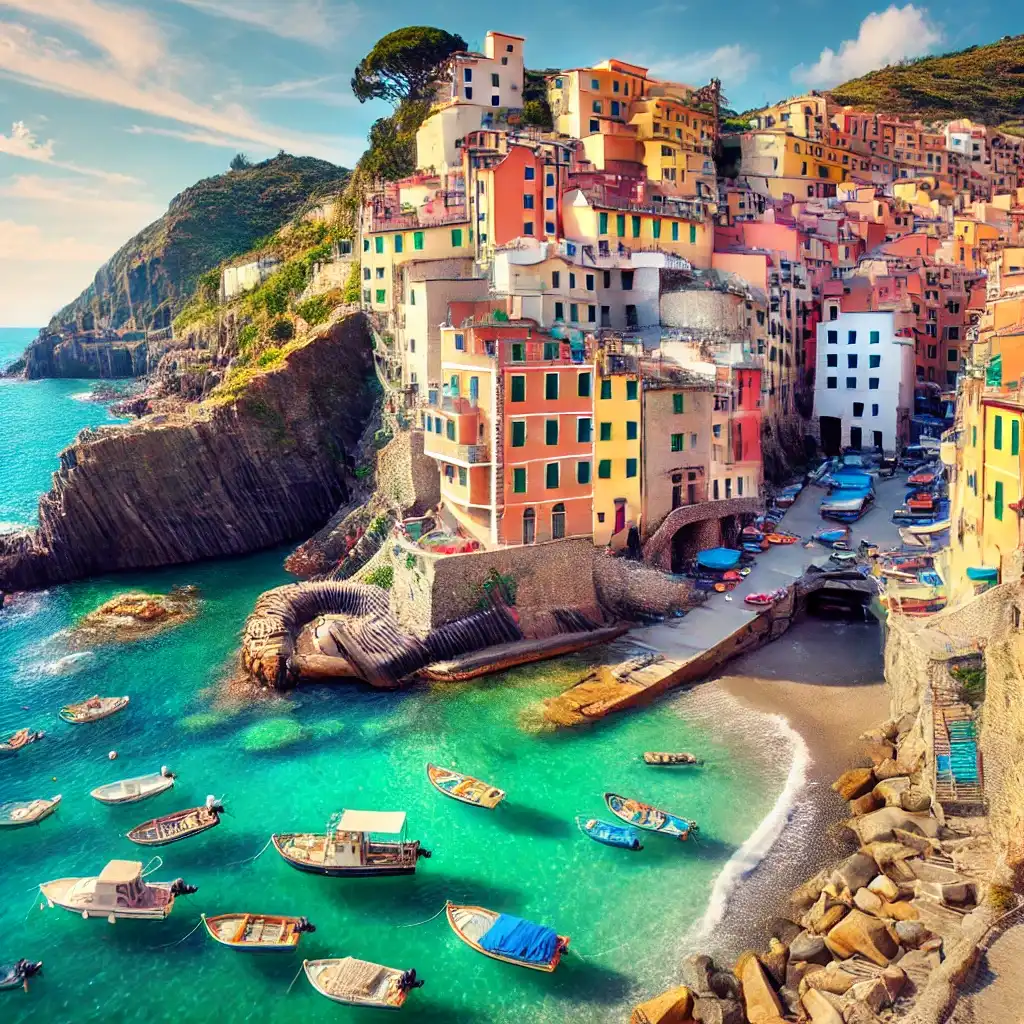
Italy is a country rich in history, and its medieval villages are living proof of that. Walking through the streets of these small towns means stepping back in time, surrounded by castles, fortified walls, and ancient traditions. In this thematic itinerary, we’ll explore villages with castles, coastal medieval towns, and hilltop villages — perfect for those who love medieval architecture and breathtaking landscapes. Here’s a practical guide to discovering some of the most fascinating gems of Italy.
Villages with Castles
1. Monteriggioni, Tuscany
A true medieval gem, Monteriggioni is famous for its perfectly preserved city walls, dating back to the 13th century. The village, even mentioned by Dante in the Divine Comedy, feels like something straight out of a history book. Besides strolling along the ancient walls, you can visit the castle and enjoy a breathtaking view of the Chianti hills.
Practical Tip: Monteriggioni can be visited in a day, making it a perfect option for a day trip if you’re in the Siena area.
2. Vigoleno, Emilia-Romagna
This small village is encircled by mighty medieval walls and boasts a stunning castle that overlooks the Val d’Arda. The castle is open for tours and often hosts historical events and art exhibitions. Walking through its narrow, cobblestone streets will make you feel like a knight in the Middle Ages.
Practical Tip: If you’re interested in architecture, don’t miss the castle’s chapel, a Romanesque gem.
3. Saluzzo, Piedmont
Saluzzo is a town that perfectly blends its medieval soul with Renaissance influences. The Castiglia, the fortified residence of the marquises of Saluzzo, dominates the landscape with its impressive structure. The narrow streets of the historic center, lined with centuries-old palaces, are a journey back in time.
Practical Tip: After visiting the castle, explore the historic center and enjoy typical Piedmontese dishes at a local restaurant.
Coastal Medieval Villages
4. Cefalù, Sicily
Cefalù, on the northern coast of Sicily, is one of the most charming medieval villages with an unrivaled view of the Tyrrhenian Sea. The Duomo, built by Roger II, is a Norman masterpiece and one of the town’s most iconic landmarks. The cobblestone streets and the Medieval Washhouse contribute to making Cefalù a delightful destination, perfect for those who love both the sea and history.
Practical Tip: Visit Cefalù in spring or autumn to avoid the summer crowds and fully enjoy its beauty.
5. Sperlonga, Lazio
This picturesque white-washed village perched on the coast offers the perfect blend of history and relaxation. The medieval town is full of winding alleys and stairways leading down to stunning beaches. A must-see is the Grotto of Tiberius, where the Roman Emperor once sought refuge.
Practical Tip: Take your time to explore Sperlonga’s beaches and sample fresh seafood dishes at local restaurants.
6. Tellaro, Liguria
A small fishing village perched on cliffs overlooking the sea, Tellaro feels like it’s been painted on a canvas. The colorful houses facing the harbor and the narrow, winding streets create a fairy-tale atmosphere. This village is a hidden gem, still relatively unknown to mass tourism.
Practical Tip: Tellaro is the perfect spot for a romantic getaway, far from the crowds. Don’t forget your camera: the views are stunning!
Hilltop Villages
7. Erice, Sicily
Erice is one of the most enchanting villages in Sicily, perched at 750 meters above sea level and often shrouded in mist, giving it an even more magical feel. The village is famous for its Castle of Venus and ancient Cyclopean walls. From here, you can enjoy spectacular views of the Trapani coastline.
Practical Tip: For those who love mysterious atmospheres, visit Erice on a cloudy day for a unique and mystical experience.
8. San Gimignano, Tuscany
San Gimignano, a UNESCO World Heritage site, is known as the ‘Medieval Manhattan’ for its many towers that rise high into the Tuscan landscape. In the Middle Ages, it had 72 towers, and today, 14 remain, giving the town its impressive look. The cobblestone streets, historic buildings, and museums make San Gimignano a must-see for history lovers.
Practical Tip: To avoid the crowds, visit San Gimignano early in the morning or late in the afternoon, and enjoy the sunset from the city walls.
9. Cortona, Tuscany
Another hilltop village not to be missed is Cortona. This town, made famous by the book Under the Tuscan Sun, is a medieval gem overlooking the Valdichiana. Its history dates back to the Etruscans, but it took its current form in the Middle Ages. The narrow streets invite you to get lost and discover charming views around every corner.
Practical Tip: Cortona is also known for its art festivals. If possible, plan your visit during one of these events for an immersive cultural experience.
10. Pitigliano, Tuscany
Known as the ‘city of tuff’, Pitigliano is a village carved into a tuff cliff, with a history dating back to the Etruscans. Its houses and streets seem to be a natural extension of the rock they are built on. It’s also famous for its Jewish community, and the Jewish quarter, with its synagogue, is one of the main attractions.
Practical Tip: Visit Pitigliano’s underground caves to discover the fascinating archaeological history of the area.
FAQ
- What is the best time to visit Italian medieval villages?
- The best times to visit are spring and autumn when the weather is mild, and there are fewer tourists.
- Is it necessary to rent a car to visit medieval villages?
- Yes, many villages are not well connected by public transport, so renting a car offers more freedom to explore.
- What should you absolutely see in a medieval village?
- Don’t miss the historical buildings such as castles, churches, and city walls, and be sure to stroll through the narrow streets to soak in the authentic atmosphere.
Further Reading
- The Most Beautiful Villages of Italy: Official link
- Guide to Historic Villages in Italy: Article on Italia.it
- Cultural and Historical Itineraries in Italy: Tips on Visit Tuscany


